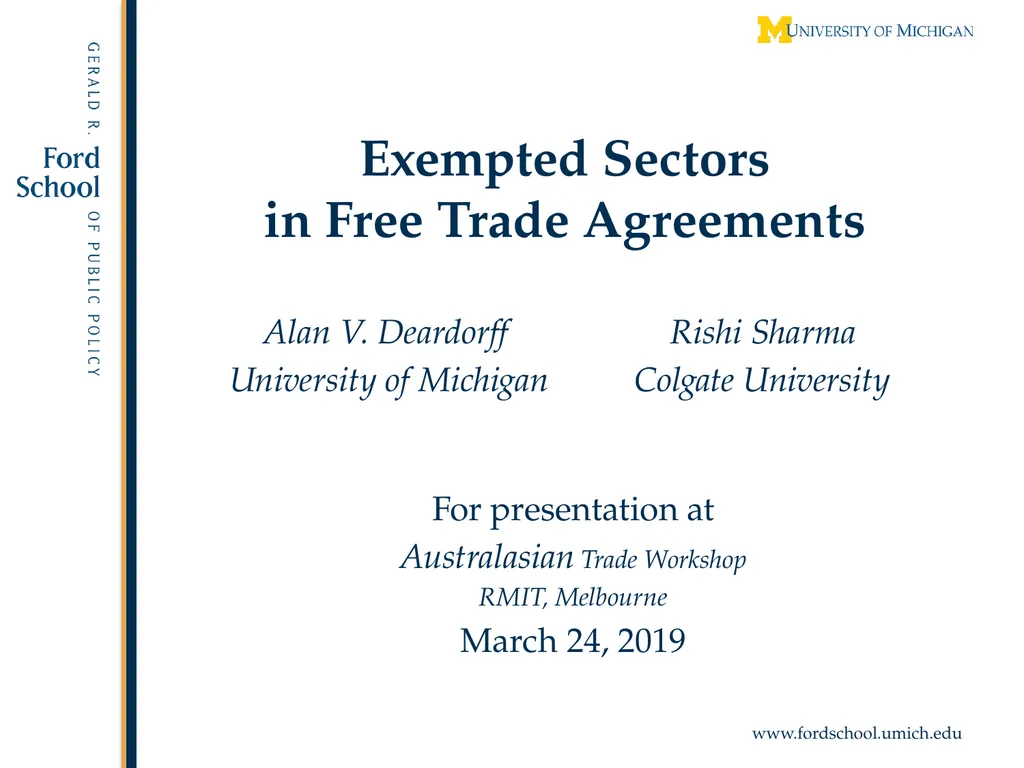
Exempted Sectors in Free Trade Agreements Alan V.
Author: phoebe-click | Published: 2025-05-24
Description: Exempted Sectors in Free Trade Agreements Alan V. Deardorff Rishi Sharma University of Michigan Colgate University For presentation at Australasian Trade Workshop RMIT, Melbourne March 24, 2019 Exempted Sectors These are sectors that retain
Download Presentation
Download the PPT/PDF: Download
Transcript:
Loading transcriptÖ